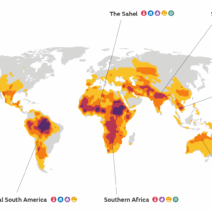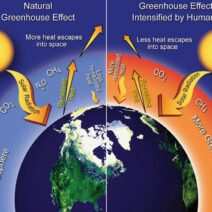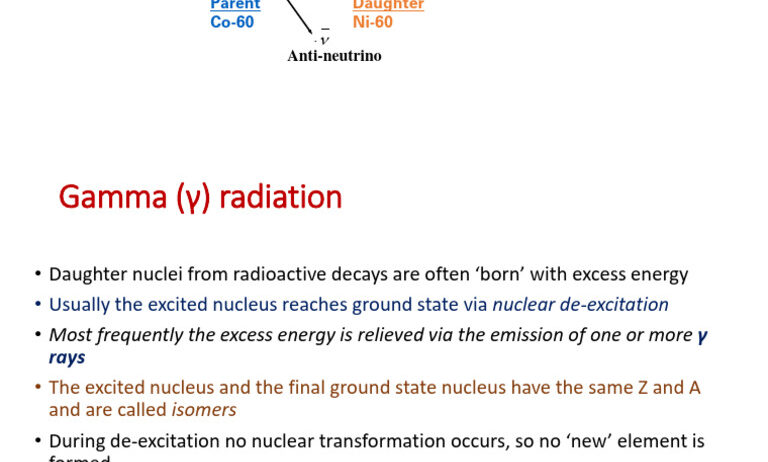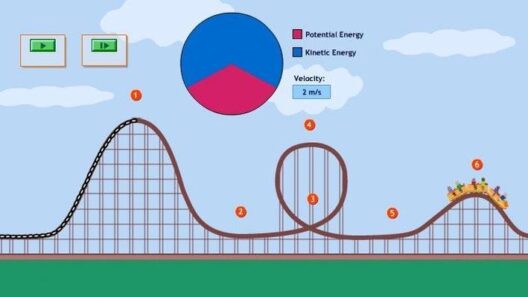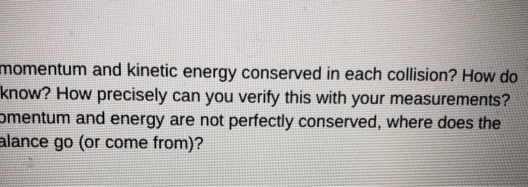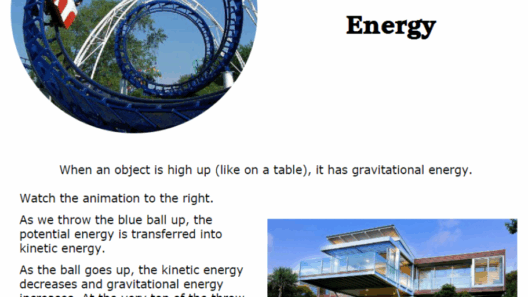Energy conservation is a cornerstone of physics, a principle that evokes intrigue and prompts further inquiry into a myriad of phenomena, including radioactive decay. At first glance, one might assume that energy transformation during this process adheres strictly to the law of conservation of energy—a fundamental tenet that states energy cannot be created or destroyed, only transformed from one form to another. However, as we delve deeper into the complexities of radioactive decay, the question emerges: Is energy truly conserved in such a seemingly chaotic process?
To begin unraveling this inquiry, it is essential to understand the basics of radioactive decay. This phenomenon occurs when unstable atomic nuclei undergo spontaneous transformation to reach a more stable state. During this process, the nucleus emits radiation, which can include alpha particles, beta particles, and gamma rays. The transformation can be modeled by different decay chains, which may seem overwhelming at first, but it is critical to comprehend that energy is inherently involved in these processes.
When a nucleus decays, it releases energy. The emission of these particles is not just random; it is governed by the binding energy of atomic nuclei. Binding energy is the energy required to disassemble a nucleus into its constituent protons and neutrons. Each element has a specific binding energy that varies depending on its configuration. When a nucleus emits particles, it transitions to a lower energy state, thereby releasing energy in the form of kinetic energy of the emitted particles and radiation.
Consider the analogy of a boulder rolling down a hill. Initially, at rest, the boulder possesses potential energy. As it moves downhill, that stored energy is converted to kinetic energy. Similarly, an unstable nucleus, laden with excess energy, will seek stability by ‘rolling down’ towards a state of lower energy. The energy released during radioactive decay exemplifies this transition, where the nucleus ‘loses’ energy, yet the energy is converted and manifest as radiation or kinetic energy of emitted particles.
But, does this mean energy is not conserved? Not at all. The energy released during radioactive decay is balanced by the decrease in potential energy of the original nucleus. What often perplexes observers is the displacement of energy from one form to another, illustrating the transformative nature of energy rather than its disappearance. The emitted radiation carries quantifiable energy that can, in some contexts, be harnessed for practical applications—think of the discipline of radioisotope thermoelectric generators (RTGs) used in space exploration, where radioactive isotopes decay and produce power to fuel spacecraft.
The inherent complexity of energy conservation in radioactive decay begins to unfurl further when considering half-lives. The half-life of a radioactive substance—the time required for half of the quantity to decay—introduces probabilistic behavior into the calculus of conservation. As isotopes decay at predictable but random intervals, each decay is an individual event that adheres to energy conservation principles while contributing to an overall exponential decrease in the quantity of the radioactive substance. This statistical nature adds yet another layer of intrigue.
Moreover, there is an intriguing interplay between mass and energy during radioactive decay, as articulated by Einstein’s famous equation, E=mc². The decay leads to a slight loss in mass, which is converted into energy. This revelation underscores that mass itself is a form of energy, further solidifying our understanding of conservation. Indeed, while the decay process appears chaotic, the underlying physics remains unfalteringly orderly, adhering to energy conservation laws.
In considering the broader implications of energy conservation in radioactive decay, it is beneficial to revisit the environmental consequences of nuclear energy. The balance between energy produced and energy consumed in nuclear reactors is a salient topic—one that showcases the delicate interaction between harnessed energy from radioactive decay and its potential to mitigate greenhouse gas emissions. Emulating nature’s own mechanisms, these technologies can offer sustainable energy solutions, provided they are managed responsibly.
The quest for alternative energy sources also invites a reevaluation of our perspectives on nuclear waste. While the by-products of radioactive decay pose environmental challenges, they also present opportunities for energy recovery and innovation. Efforts to recycle nuclear waste into usable energy illuminate not just logical reasoning, but also inspire curiosity about sustainability in technological applications—in other words, how to derive further utility from a resource initially deemed waste. This highlights the importance of research aimed at enhancing the safety and efficiency of radioactive materials, thereby providing an impetus for conservation and engagement.
Thus, as we examine the question, “Is energy conserved in radioactive decay?”, the answer transcends a simple yes or no. It is a resounding affirmation of the principles of conservation, imbued with complexity and depth. Every decay signifies a transition, an intricate dance of energy that shivers through particles, intertwines with mass, and ultimately challenges us to rethink our relationship with energy. Herein lies the beauty of science—a continuous invitation to explore, innovate, and foster an ethos of conservation that respects the planet’s finite resources.
In conclusion, the multifaceted nature of energy in radioactive decay beckons us toward a paradigm shift. Rather than perceiving decay solely as a destructive force, we must recognize it as a transformative process laden with potential for both inquiry and application. This philosophical shift inspires not only a deeper understanding of fundamental physics but also a heightened commitment to conservation in our everyday practices and technologies.
